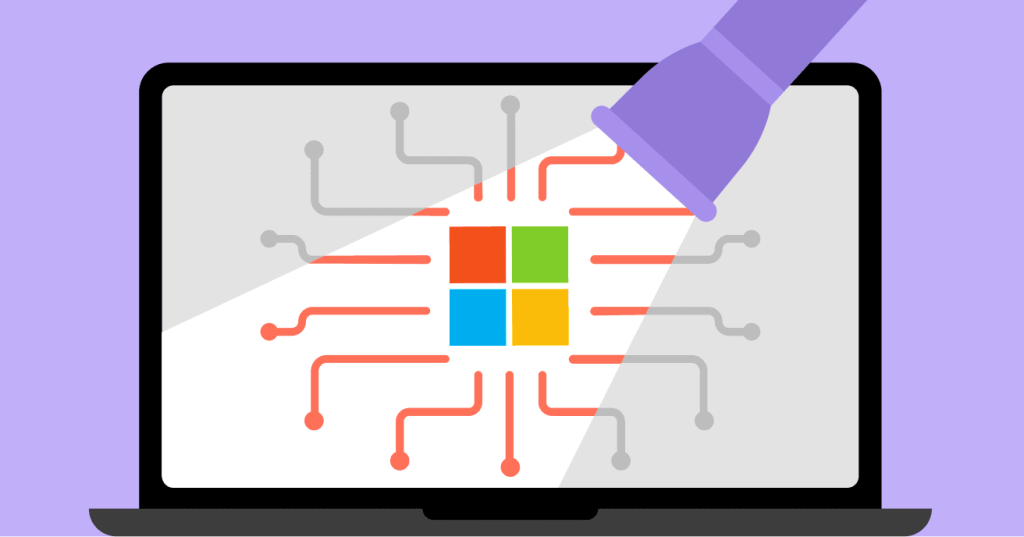-
Microsoft’s global systems now process over 100 trillion security signals every single day.
-
AI is taking cyberattacks to a new level, bringing automation to everything from phishing to vulnerability discovery.
-
Ransomware remains a significant threat, with one terminated 68 seconds after it began.

In the digital world, we have seen a dramatic increase in AI-based cyberattacks. Microsoft’s defenses are now analyzing a staggering volume of data to keep up.
Equipped with AI, hackers are now moving faster, getting slicker, and running new, advanced campaigns with more ease than ever before. This new tech now appears to be bringing in a new level of digital chaos.
An AI-Powered Battlefield
Microsoft’s latest Digital Defense Report reveals a digital arms race. The company processes over 100 trillion security signals daily. This highlights an explosion in cyber threats.
Artificial intelligence is now a key tool for both sides. “We are living through a defining moment in cybersecurity,” said a Microsoft VP. AI is challenging economic stability and individual safety.
Attackers are using generative AI to scale their operations. They automate phishing and improve social engineering. Now they are able to discover software vulnerabilities faster than humans can remedy them.
Additionally, there is this new wave of malware that is even nastier. It’s autonomous and can switch up its tactics in real time to dodge your security like it’s playing dodgeball. Even the AI tools themselves are also becoming targets.
Hackers use techniques like prompt injection and data poisoning. They’re manipulating AI models to steal data or make them do things they aren’t supposed to do.
Ransomware and Identity Theft Prevail
Identity-based attacks are still the most common method. Phishing and social engineering caused 28% of all breaches. Attacks on unpatched web assets accounted for 18%.
Multi-factor authentication (MFA) is still a rockstar – it stops almost all the sketchy logins, with over 99% getting blocked. But not everyone uses it; some companies are still lagging behind, giving hackers open windows to exploit stolen passwords.
The report also mentions the rise of “infostealers.” This malware secretly collects user credentials. These login details are then sold on dark web markets. This will allow even more credential-based intrusions to happen.
And ransomware? Still the number one nightmare. Over 40% of recent cases involved hybrid cloud components. The speed of these attacks is breathtaking.
One global shipping firm nearly faced disaster in February. A ransomware attack was detected and halted. The encryption process was stopped just 68 seconds after it started.
New Threats from AI Browsers
The attack landscape is expanding with new technology. The rise of AI-powered browsers introduces fresh risks. These browsers use AI agents to automate user tasks.
A report from SquareX Labs outlines major security weaknesses. Attackers can trick AI browsers into downloading disguised malware. They are also vulnerable to “prompt injection” attacks.
Hidden instructions embedded in trusted apps can manipulate the AI. This could force it to share private data or spread harmful links. Attackers can even misuse legitimate business tools to deliver malicious commands through AI.
The researchers warn that current security tools have limited visibility. They often struggle to tell whether a human or an AI agent performed an action. This creates a significant blind spot for defenders.
A Call for Urgent Action
Microsoft has issued urgent recommendations for all organizations. Leaders must treat cybersecurity as a board-level risk. They should enforce phishing-resistant MFA for all employees.
It is also critical to map and monitor all cloud workloads. Experts strongly recommend joining threat intelligence-sharing networks. Companies must also begin planning for both AI and quantum computing risks.
The bottom line – if you’re not beefing up your defenses, cooperating with others, and moving at a fast pace, you’re simply giving an open invitation for these risks to attack you. AI is changing the whole paradigm, and sitting back is not an option anymore.